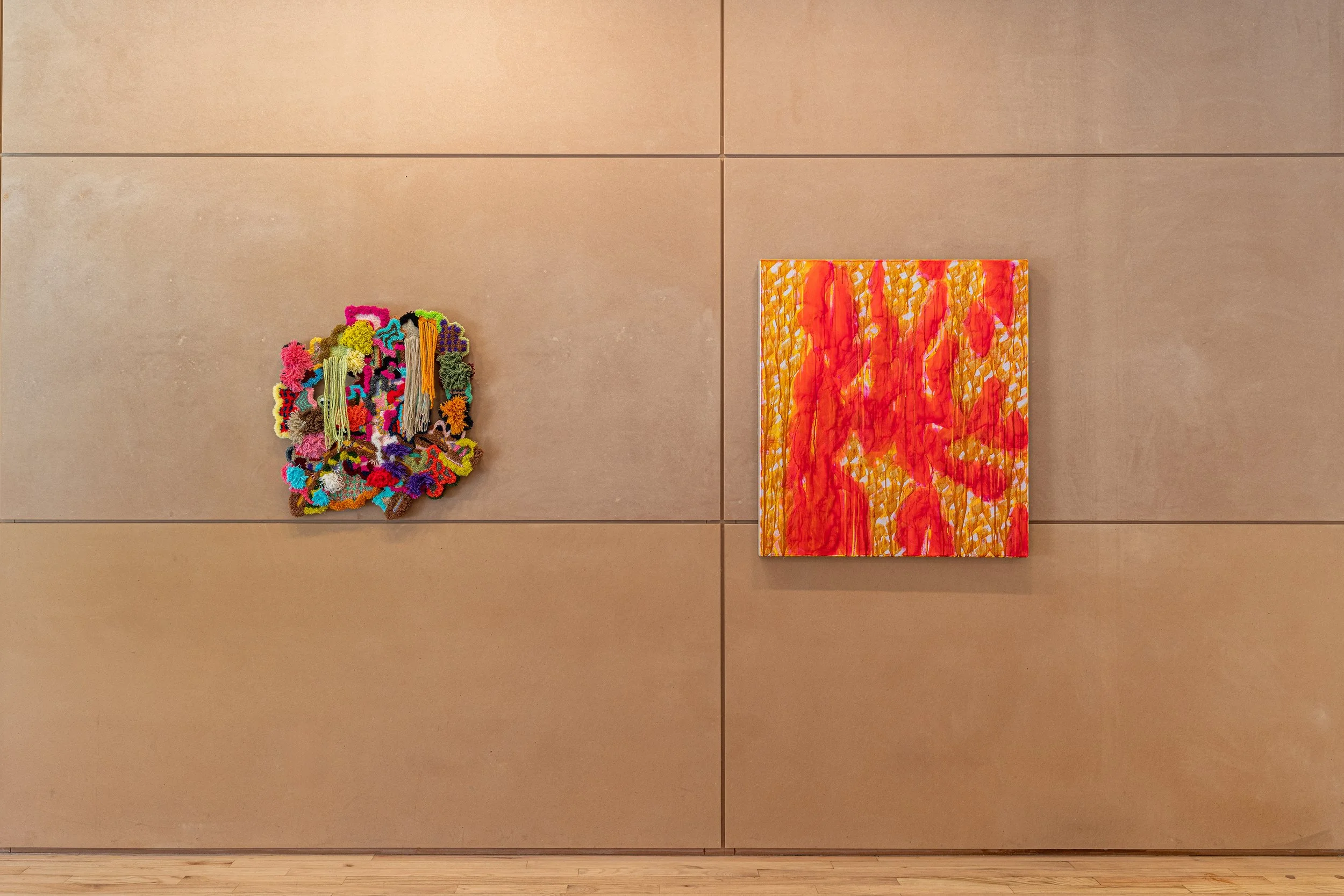Shoto Kohagura and Julius Linnenbrink
March 14 - April 27, 2024
Transcendentalism, an American philosophical and literary movement of the mid-19th century, emphasized the belief in the divine presence inherent in the everyday. The artists in this exhibition similarly explore themes of spirituality, consciousness, and personal identity in their work. While the works are an expression of both internal and external conflict, they reflect on our collective relationship to the universe in a muted or exuberant response.
Julius Linnenbrink (b. 1989, Herdecke, Germany) begins his paintings in what he calls the “abstract space or location of the mind.” Working quickly with acrylics, Linnenbrink allows himself the freedom to create his sweeping paintings with great focus and concentration on the piece itself, its color values, and its composition.
Tumultuous and mercurial, like clouds rolling out after a calamitous storm, Linnenbrink finishes his works on linen with a sheen. Its the black mirror effect; its smooth surfaces just glossy enough to reflect its surroundings and deflect from the brewing contents of its interior. Building up the paintings in thin, sometimes undulating layers, Linnenbrink invites his viewer to enter into the depths of the spaces he creates. The “flow” in their creation reveals the artist's thought, action, reaction, time, trust, and sincerity.
Takashi Murakami’s concept of “Superflatness” was born from a hypothesis created by art historian Nobuo Tsuji. His book, The Lineage of Eccentricity, analyses works from the Edo period and explores how the picture controls the speed of its observer's gaze. Creating an interaction between the surface and the viewer with a zigzag motion.
The emergence of “Superflatness” was also due to the bursting bubble of the Japanese economy. In the 1990s followed by rabid consumerism and the slavish following of fads, especially in fashion. This further contributed to a culture of surfaces and superficiality, as well as the rise of Japanese youth culture centered on eschewing the minimalism of the traditional Japanese aesthetic.
Enter here the work of Okinawa-based artist Shoto Kohagura (b. 1989, Japan) whose colorful, hand-tufted textile pieces evoke the glow of neon on a bustling street in Tokyo. The colors and patterns of the works are inspired by clothing textiles, and the different colors and different patterns that compose them. Kohagura’s fashion background is fully displayed in stream of consciousness hook and eye novellas written entirely in Rya. The concept of the work is to explore new aspects that arise from affirmation.





